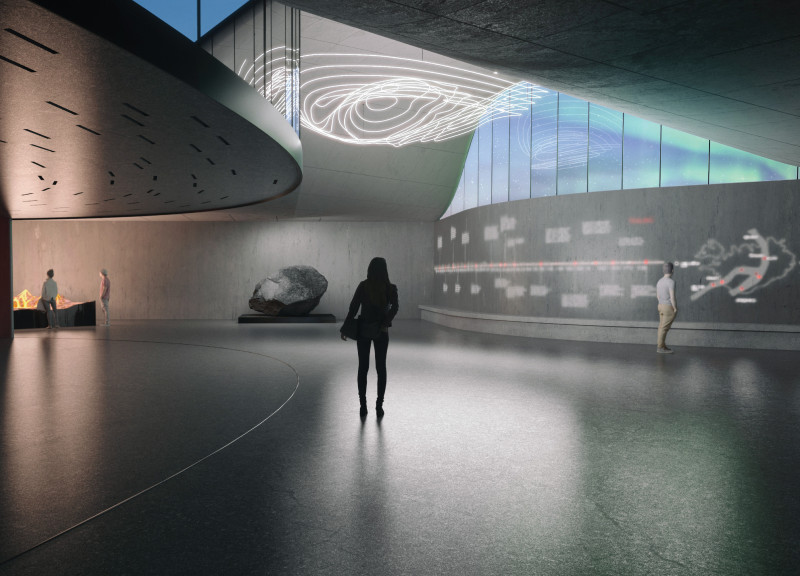5 key facts about this project
The Volcano Museum in Reykjahlíð, Iceland, is shaped by the area’s distinct geological features. It sits at the junction of two tectonic plates: the North American and Eurasian. This location is a natural setting for a facility focused on the volcanic history of Iceland. The design highlights the movement of these plates, providing visitors with insights into the earth's forces that have molded the landscape over time.
Architectural Concept
The museum's design focuses on an artificial crack that symbolizes the natural phenomenon of tectonic plate movement. This feature runs through the site, acting as a visual and thematic representation of the geological activity that occurs in Iceland. As visitors explore the museum, they follow a path that reflects this geological story, deepening their connection to the natural environment.
Spatial Arrangement
The facility consists of four connected volumes designed to guide visitor traffic. Upon entering, individuals follow a well-defined path that leads through different exhibition halls, ultimately arriving at a café with views of Hverfjall. This arrangement not only enhances the flow of movement but also integrates the architecture with the surrounding landscape, allowing nature and structure to coexist thoughtfully.
Materiality
Materials used in the construction of the museum are important for both practicality and visual appeal. The design incorporates metal roof structures, thermal insulation, and prefabricated concrete panels. These choices ensure durability and efficient use of resources. Lava tiles, grout, and various metal elements are also part of the design, contributing to both the aesthetic and functional aspects of the museum.
Architectural Integration
Principles of Icelandic vernacular architecture are evident throughout the design. By partially embedding the building in the ground, the project enhances thermal efficiency and visitor experience. Windows serve as lanterns by day and viewfinders by night, focusing attention on the sky and nearby volcanic landscapes. This thoughtful placement of openings reveals the landscape gradually, allowing visitors to appreciate each view as they journey through the space.
The result is a design that connects the human experience with the natural world, showcasing the relationship between built environments and the ever-changing forces of nature.
























































